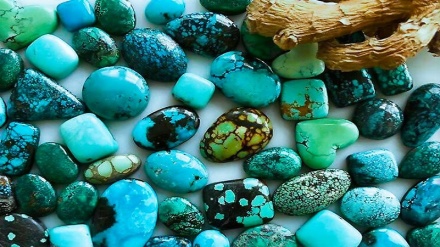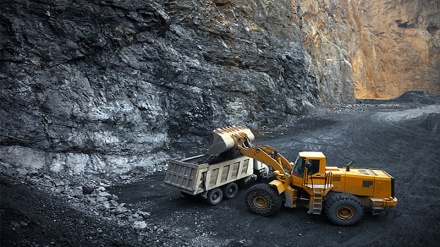Iranian Market (2)
As you know this series takes a brief look at the most important goods produced in the precious land of Islamic Iran in the fields of agriculture, science and industry. In this episode we discuss the growth and production of saffron, the world’s most expensive spice.
Iran’s variable climate, its fertile soil and its diligent and hard- working people have made this country the land of abundance of blessings. Iran is home to different herbs some of which are universally known. One of these herbs is saffron that the record of its growth and cultivation dates back before the birth of Jesus Christ.
It is said that Iranians were the first people who discovered this herb and started growing it. Skirt of Alvand Mountains in Hamedan and Kermanshah provinces in Western Iran were the main home to the growth of this herb during the rule of Medes in 549- 728 BC.
After passage of time this herb was not only transferred to other provinces of Iran, but also the cultivation and trade of this herb during centuries made it known to the people of other countries.
Moreover, historians recognize Alexander’s attack to Iran in 334 BC as another factor that made this precious herb known to Greeks, Romans and then to Chinese.
Despite all these facts saffron is still synonymous to Iran in the international markets.
Iranians have always been the major producer and trader of saffron in the world.
Saffron is one of the agricultural products that consumes little amount of water so this quality makes it possible for this herb to grow in different regions.
Today different regions in Eastern and Northeastern Iran grow saffron.
South Khorasan province in Eastern Iran is one of the provinces that has universal reputation for growing saffron.
Saffron is known by various titles such as flower of health, king of spices, and red gold.
From the viewpoint of botanists and agriculturists, saffron has many special characteristics.
As you know saffron is derived from the stigmas of the saffron crocus. The stigmas in the delicately scented saffron flowers are dried and used in cooking to color and add aroma to food.
Saffron crocus flowers in autumn shortly after planting. Flowers are fragrant and violet in color. The outstanding feature of the flower is its style which divides into three brilliant red stigmas.
Visitors from different regions usually flock to the villages where this herb is grown in order to watch the harvest of the most expensive spice in the world.
The most ancient document that mentions the spice of saffron belongs to the Achaemenid era (330- 550 BC).
On an inscription which is left from the time, the amount of saffron used by the court of Iranian empire was estimated about one kilogram. It should be noted that for production of one kilogram of dried saffron, between 100 thousand to 200 thousands saffron flower is needed and that a worker needs forty hours to pick 150 thousand saffron flower.
On average, between 200 to 300 tons of saffron is produced across the world annually.
For production of 250 tons of saffron 25 million tons of saffron flower is needed.
Iran accounts for more than 90 percent of the world’s production of saffron.
Saffron is a precious herb which is also used in medical industry. In past, well- known Iranian physicians such as Zakaria Raazi, Abu Ali Sina and Abu Reyhan Birooni used this plant for treating their patients.
Because saffron constitutes different kinds of carotenoids, it has anti-carcinogenic effects.
Saffron prevents Alzheimer’s disease and Parkinson’s disease and is used for treating a vast range of diseases like cold, hepatitis, diabetes and ingestion.
Saffron also detoxifies the liver and kidneys, cleanses the blood, heals the cuts and bruises and is a powerful antioxidant. It also includes vitamins B1, B2, B6 and C.
One of the other medicinal effect of this plant which has been well- known since past times is that it reduces symptoms of depression, anxiety and other mental disorders. Saffron’s antidepressant properties are related to serotonin metabolism.
Saffron is also used in food industry. According to researchers saffron is a natural permitted colorant.
Adding saffron foods has an old history. Iranians since the ancient times used saffron in making sweets and foods for their celebrations and special occasions.
Iranians have also used saffron as a natural stable colorant in their art pieces such as in calligraphy or carpet weaving.
The high quality of Iranian saffron has made Iran the biggest and first exporter of this precious product in the world. Iran’s saffron is exported to tens of countries including Spain. Spain ranks second in exporting saffron while this country is one of the major importers of Iranian saffron. China, India, Singapore, Malaysia, Japan, Taiwan, France, Italy and Germany are other producers of saffron in the world.
In recent years the production of saffron in Iran has risen thanks to the activities of Iranian science- based companies in the fields of research and development as well as working on the packaging this product.
AE/ME


